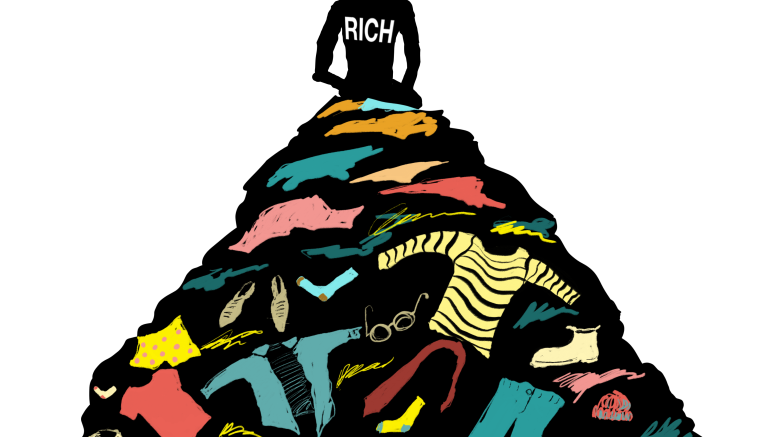The environmental damage done by the fast fashion industry on our planet is severe. However, this phenomenon has been building for a long time.
Currently, the industry accounts for close to 10 per cent of total global carbon emissions and 20 per cent of global waste water.
Over 200 million trees are being cut down annually to make fabric, contributing to deforestation. Waste generation is high within the industry, with textiles contributing 92 million tonnes of waste to landfills and making up close to 10 per cent of all microplastics that end up in the ocean each year.
The facts are everywhere, and these statistics are alarming.
Big retail brands have begun to face criticism and public scrutiny over their unethical production means and mass contribution to the climate crisis, with overproduction in the clothing industry highlighted as a major problem. In 2018, H&M reported over 4 billion dollars of unsold inventory.
Nonetheless, overproduction is fuelled by overconsumption. The problem is, this rigorous production model is supported by demand.
Fast fashion consists of cheap clothing that pulls from ever-changing trends, creating new pieces to meet consumer demand at a rapid pace. New styles are churned out as fast as possible, only to be discarded by consumers once trends change. This cycle of overproduction and overconsumption has resulted in the fashion industry becoming one of the world’s largest polluters.
The accessibility and affordability of fast fashion keeps the industry afloat, and the industry will continue to overload consumers thanks to online media creators who further push fast fashion within the capitalist system.
As the fashion industry continues to move at an unprecedented pace and trends engulf the social media scene, fast fashion has supported shoppers’ increased consumption patterns.
CEO of online consignment company thredUP James Reinhart described fast fashion as the “next big tobacco,” and he isn’t far off.
Even if a piece of clothing is manufactured from high-quality organic material, an avid fast fashion enthusiast would not fathom spending over $50 on a top when they could get a replica for less than $10 on Shein. Plus, free shipping!
I am not exempt from this. I find myself plagued by re-wear anxiety and the need to treat myself at every minor inconvenience to a Zara haul.
However, my personal relationship with clothing changed over the course of the pandemic. I had a sudden, obvious realization that I do not need this many clothes!
Many of our beloved clothing items are linked to environmental degradation and the climate crisis, so adjusting our consumption behaviours and making more conscientious fashion choices is a must.
A global shift away from fast fashion to more ethical and sustainable fashion is necessary.
By thrifting second-hand clothing, or supporting local artisans or brands who use ethically sourced fabrics in clothing production, we can easily curate our personal style without costing the environment nearly as much. When we acquire clothing made from higher-quality, eco-friendly materials, we can reduce the amount of clothes we throw out.
Shopping sustainably looks different for different people. As consumers, we have the responsibility of researching and finding ethical brands that work for us.
Also, our consumption patterns matter. It’s easy to be swept up by the huge variety of options while shopping, but understanding that less is more is key.
Awareness is great, but unaccompanied by action, it is futile.
The simple truth is that fast fashion cannot exist in a sustainable environment, and we need to make a collective effort to move away from it. Influencers need to abolish the thousand-dollar YouTube hauls and instead use their platforms to spread more awareness.
Our consumer habits need to change drastically, and until active steps are taken to address the detrimental impact our wardrobes are having on the environment, we cannot truly move forward as a society.





